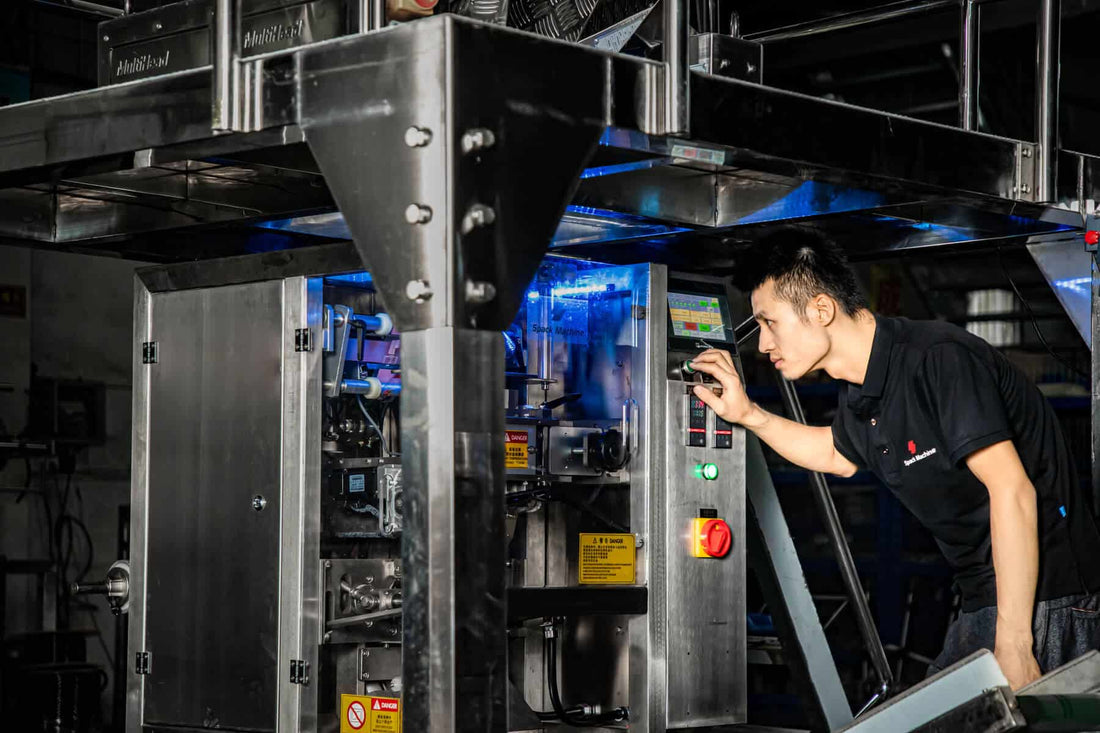
Streamline Coffee Processing
Share
The coffee processing industry is undergoing a transformative shift with the advent of automation. For coffee producers, roasters, and distributors, adopting automated solutions can mean higher efficiency, reduced waste, and consistent quality. However, automation isn't just about investing in the latest machinery—it’s about implementing best practices that align with the unique needs of your business and customers.
In this blog, we’ll explore industry best practices for leveraging automation in coffee processing, helping you stay ahead in this competitive landscape.
1. Understand Your Process Before Automating
Before introducing automation, it’s crucial to map out your current coffee processing workflow. From green bean sourcing to roasting, grinding, and packaging, each stage presents opportunities for optimization.
- Conduct a process audit: Identify bottlenecks, repetitive tasks, and quality inconsistencies that automation can address.
- Prioritize key areas: Focus on high-impact areas like roasting precision or packaging speed for initial automation investments.
Example: A small roastery implemented automated packaging equipment for consistent sealing and portioning, leading to 30% faster delivery times.
2. Invest in Scalable Technology
The coffee industry is dynamic, with fluctuating demand and consumer preferences. Scalable technology ensures you can expand or adapt your operations without overhauling your system.
- Modular machines: Look for systems that allow you to add features like additional fillers or conveyors as your business grows.
- Software compatibility: Ensure your automation systems can integrate with existing inventory management or quality control software.
Insight: According to a report by Research and Markets, the global coffee automation market is expected to grow at a CAGR of 6.1% through 2028, driven by the demand for scalable and efficient solutions.
3. Focus on Quality Assurance
Automation can significantly enhance quality control by reducing human error and providing real-time monitoring. Key practices include:
- Data-driven adjustments: Use sensors to monitor temperature, humidity, and grind size in real-time for consistent output.
- Traceability: Automate data collection for lot tracking, ensuring compliance with food safety standards.
Case Study: Starbucks employs sophisticated roasting technology that adjusts in real-time based on bean moisture content, ensuring uniformity across batches.
4. Sustainability as a Core Focus
Sustainability is more than a buzzword; it’s an integral part of modern coffee processing. Automating sustainable practices can reduce waste and energy consumption.
- Energy-efficient machines: Invest in equipment with eco-friendly certifications, such as low-energy roasters or packaging systems.
- Material optimization: Automate the use of biodegradable or recyclable packaging materials.
Fact: A study by Global Coffee Platform revealed that sustainable practices can improve profitability by up to 20% for coffee producers.
5. Train Your Team
The best automation systems are only as good as the people operating them. Provide your team with the necessary training to ensure they can:
- Operate machinery efficiently.
- Troubleshoot minor issues.
- Analyze data outputs for continuous improvement.
Pro Tip: Partner with equipment suppliers who offer robust training programs and after-sales support.
6. Leverage IoT and Smart Technologies
The Internet of Things (IoT) is revolutionizing coffee automation by connecting machines and systems for seamless operations.
- Predictive maintenance: IoT sensors can alert you to potential equipment failures before they happen.
- Remote monitoring: Track production metrics in real-time from anywhere, ensuring minimal downtime.
Trend: Companies like Probat are integrating IoT into their roasting systems, enabling remote control and data analytics for precision roasting.
7. Collaborate with Industry Experts
Partnering with experts can help you navigate the complexities of automation. Whether it’s consulting with engineers or attending trade expos, staying informed ensures you’re implementing the best solutions.
Resources to Explore:
- Coffee Roasters Guild: Offers workshops and certifications in advanced coffee processing.
- Specialty Coffee Association (SCA): Provides resources and events focused on coffee automation trends.
Conclusion
Automation is no longer a luxury; it’s a necessity for thriving in today’s coffee processing industry. By focusing on scalable technology, quality assurance, and sustainability, and by training your team effectively, you can ensure a smooth transition to automation that drives profitability and customer satisfaction.
Are you ready to elevate your coffee processing operations? Start by assessing your current workflow and exploring cutting-edge solutions tailored to your needs.
Contact us today to learn how our innovative automation systems can revolutionize your coffee business!
References:
- Research and Markets, Global Coffee Automation Market Outlook
- Global Coffee Platform, Sustainable Coffee Processing Practices
- Specialty Coffee Association, Automation in Specialty Coffee